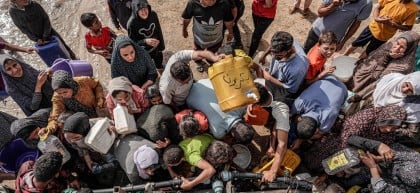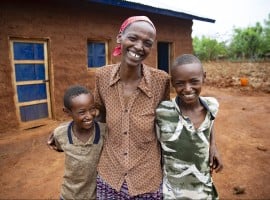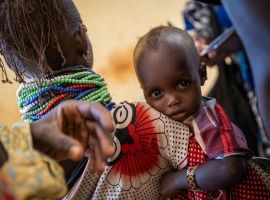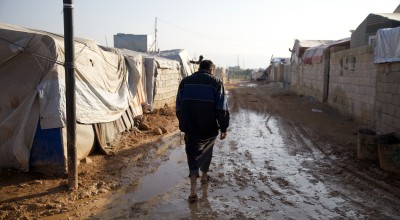
Read our 2024 annual report

Knowledge Hub
There are plenty of myths and misinformation around the refugee population. Here, we explain why the number of displaced people is on the rise.
“Why are there so many refugees?”
This is a question we often see asked on social media. Over the past few years in Ireland, around Europe and elsewhere, anti-immigrant sentiment among some small but vocal minorities has been spreading, resulting in misinformation about immigrants, refugees and asylum seekers filling social media feeds and WhatsApp groups. Some pin the blame on the refugee population for issues like the housing crisis, cuts in resources, a lack of jobs, or even for violent incidents and crimes.
This misinformation fuels fear and hatred, but rarely addresses the reasons behind the rising number of refugees.
Because yes, there are more refugees now than ever before. This is a fact. But there are many reasons for this that explain why millions have been forced to flee their homes, often with nothing but the clothes on their backs.
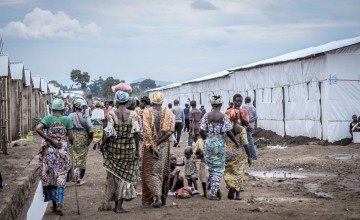
Refugees and asylum seekers: The numbers
Let’s look back at the start of the century. In the year 2000, the United Nations Refugee Agency (UNHCR) estimated that there were around 21.1 million displaced people globally. However, 10 years later, the number of people forcibly displaced from their homes began to sharply increase. By 2010, the number had reached 44 million, the highest it had been in 15 years. Fast forward to 2021, when the number of forcibly displaced people worldwide had doubled to 89 million.
So where are we now? At the end of 2024, the number of forcibly displaced people worldwide has hit 123 million. For context, that is the equivalent of the population of Japan - the 12th largest country in the world.
There’s a few designations within that group. That number includes:
- 36.8 million refugees
- 8.4 million asylum seekers
- 5.9 million people in need of international protection
- 73.5 million internally displaced people - that’s people who have been forced from their homes, but have not crossed a border.
49 million of that number are children, and 2.3 million of those children were born as refugees. And overall, that 123 million number means that 1 in 67 people on earth has been displaced.
The latest report from the UN states that as of April of this year, the global number likely fell to 122.1 million, the first decrease in over a decade - but that’s still higher than 2023.
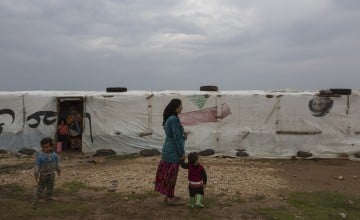
Why are there more refugees nowadays than ever before?
The main driver behind these staggering numbers is conflict - and this has been the case for years. Back in 2011, the beginning of the crisis in Syria led to a major uptick in displacement. In 2012, one year into the conflict, there were 729,000 Syrian refugees registered with UNHCR. The following year, there were nearly 2.5 million — an increase of nearly 250% - and that number grew to as many as 6.8 million Syrian refugees in 2021. And more recently, we have seen six million Ukrainian refugees fleeing across Europe, with millions more displaced within the country itself.
Now, the number of people fleeing violence today is the highest it’s been since World War 2. The Peace Research Institute of Oslo reports that there were 61 active armed conflicts globally in 2024, a record.
According to the UN, 69% of all refugees and other people in need of international protection come from just five countries - Venezuela, Syria, Afghanistan, Ukraine and South Sudan. In the latter four, ongoing conflict is the main reason for people fleeing the country. Meanwhile, Sudan, which is in its third year of conflict, is home to the world’s largest displacement crisis, with nearly 13 million Sudanese forced from their homes, including 4 million who have fled to neighbouring countries.

In addition to conflict, millions are forced to flee due to economic and civil unrest, persecution and human rights violations. (For example, in 2017, nearly one million stateless Rohingya fled persecution in Myanmar to Cox’s Bazar in Bangladesh, the world’s largest refugee settlement.)
And the climate crisis is making things even worse. Some countries may not face conflict, but the impacts of climate change are forcing them to leave their homes and farms. Droughts are scorching land and destroying livelihoods, extreme heat is making daily life dangerous, and flooding is wiping out buildings and facilities - resulting in families having to leave everything behind. While there isn’t an official classification yet for “climate refugees”, the Institute for Economics and Peace estimates that, by 2050, there will be 1.2 billion people displaced around the world due to climate change and related disasters.
Where are refugees going?
First thing’s first - people who are forced to flee their homes don’t want to do so. The key word is “forced” - it’s not a choice. While economic opportunities are a factor for some cases of immigration, people can only think about this when they are safe. Many displaced people remain in their home countries, but others cross borders to seek safety for themselves and their families.
These journeys can be extremely dangerous - whether it’s travelling long distances on foot with little to no water and food, traversing routes where they may encounter armed groups or gender-based violence, or attempting to cross treacherous oceans. And often on the other side, they are met with few resources and crowded situations where illness easily spreads.
If you have encountered any anti-immigrant sentiment, you may think that all refugees are travelling to high income countries in the west. Well, this is a myth. 67% of refugees and other people in need of international protection are hosted by countries neighbouring their own - think Sudanese refugees in Chad, or Syrian refugees in Türkiye. And low- and middle-income countries host 73% of the world’s refugees.
Iran hosts the most refugees in the world - 3.4 million - followed by Türkiye (2.9 million), Germany (2.7 million), Uganda (1.7 million) and Pakistan (1.5 million). Ireland is way down the list - 45th in the world in fact, hosting 124,730 refugees. The only other European country in the top 10 is Poland, which hosts a million refugees, primarily from Ukraine.
A key figure from the UN’s Global Trends report shows that once safe, many refugees want to return home. In 2024, 1.6 million refugees returned to their countries of origin - the highest figure in a decade. Unfortunately, for the vast majority, this just isn’t possible, due to conflict remaining active, and their homes and livelihoods being destroyed.
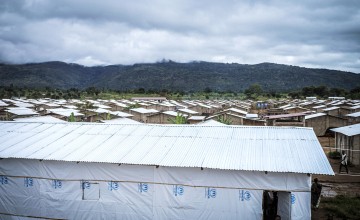
So what happens now?
That all depends on whether fighting continues globally. Unless there is a cessation of violence in places like Sudan and Ukraine, displaced people will remain displaced. No matter how much somebody wants to go home, nobody can return to a place that is still under bombardment.
And unfortunately, cuts to international aid mean that the funding to help those people has been drastically reduced. Behind all of these numbers are people - people with lives and families who are struggling to survive having already fled the unthinkable.
Across the world, we are seeing anti-immigrant and anti-refugee sentiment being stoked online and in our communities. It’s important to remember what these people are fleeing from, and that no human being is illegal. We all have the right to seek asylum - you would too if your country ever came under attack. Next time you see misinformation and myths being pedalled, think about the people behind the headlines.
Concern's work with refugees
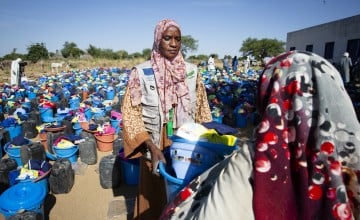
Emergency response is part of Concern’s DNA and working with refugee communities in this context has become a core skill for our teams over nearly 60 years.
We work with both refugees and host countries to ease the pressure that mass displacement can put on both groups. In addition to meeting the frontline needs — including food, shelter, protection, and other non-food essentials — we also work with refugees on longer-term initiatives, including skill-building and livelihood development and psychosocial support.
We also put a special focus on the needs of child refugees, including education, family support, and providing safe spaces where they can play and enjoy their childhood.
In 2024, we responded to 50 emergencies in 22 countries, reaching over 16 million people - from rehabilitating temporary shelters in Lebanon in communities hosting Syrian refugees, to supporting Sudanese refugees in South Sudan and Chad.
